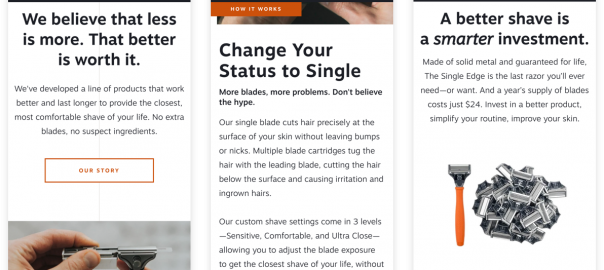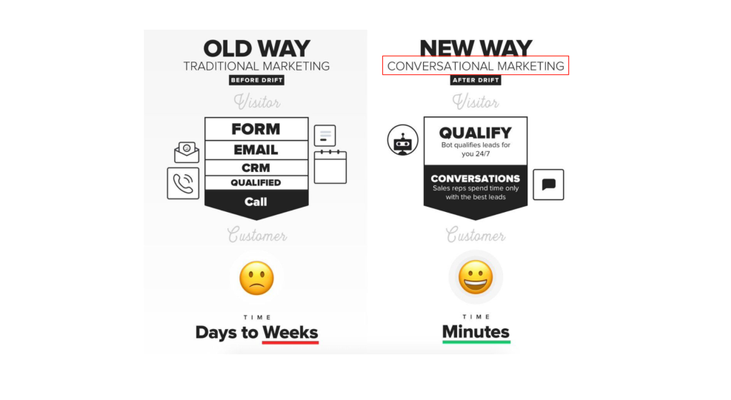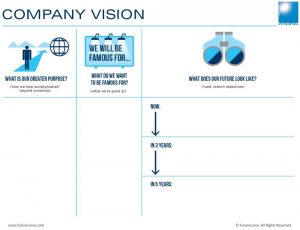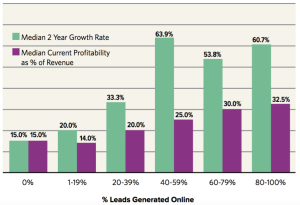You’ve spent hundreds of hours perfecting your product and countless meetings defining your brand. You feel great about your team, and it’s obvious to your customers that you care.
Yet, despite your best efforts, your competition gets all the buzz, and you struggle to stand out. Should you change your prices? Add a new feature? Raise more capital?
Before you go back to the drawing board, reconsider your product positioning.
What is positioning?
April Dunford, author of Obviously Awesome, describes positioning as “context setting.” Without setting the right context, your products and services can be difficult to understand:
When customers encounter a product they have never seen before, they will look for contextual clues to help them figure out what it is, who it’s for, and why they should care. Taken together, the messaging, pricing, features, branding, partners, and customers create context and set the scene for the product.
All things equal, effective positioning is often the difference between a thriving business and one that gets lost in the sea of competition.
“You might even think we know everything there is to know about positioning by this point,” writes Dunford. “You’d be wrong. Many of us know what positioning is, but very few understand how to do it.”
So what exactly are the ingredients of good positioning? How can you put your products in the best position to succeed?
Effective positioning has two phases:
- Recognize where positioning can improve.
- Address weaknesses via an effective positioning process.
Recognize where positioning can improve
Empty your cup so that it may be filled; become devoid to gain totality.
Zen Proverb
If you’ve spent time learning how to better position your product, you’ve likely come across the product positioning statement, popularized by the book Positioning by Al Ries and Jack Trout.
While a positioning statement can help you think about your product positioning, it doesn’t always provide actionable insight. You don’t know what you don’t know—filling out a worksheet doesn’t guarantee effective positioning.
Your products also change over time, and tweaking your strategy regularly helps you stay current with the market.
Here are five signs that your positioning could be improved.
1. You aren’t considered the preferred brand.
LaCroix was once the number-one brand of flavored water in the United States.
Thanks to a variety of great tasting flavors and effective marketing, they became a household name. But as the competition for flavored water grew, LaCroix struggled to fight off other brands.
 (Image source – lacroixwater.com)
(Image source – lacroixwater.com)
“Customers have since discovered other brands offer acceptable substitutes [. . .] and LaCroix doesn’t have much that distinguishes it from the competition in terms of intellectual property or added value,” Laurent Grandet, a beverage analyst for Guggenheim, told CNN.
You may genuinely have one of the best products in the market, but if you’re not considered the “must have” brand by your customers, sales and marketing will struggle.
Brendan Dell, author of the 12 immutable Law of High-impact Messaging, suggests considering whether you are cotton candy, a “nice to have,” or whether you’re the meat and potatoes.
Is it obvious to your target market that you’re the best choice? If they choose a competitor, is it clear what they are missing?
If internally or externally the answers are unclear, you can improve your positioning.
2. Your team struggles to express your value.
Are you confident in your team’s ability to express your value clearly? Do you have a consistent tone of voice? According to HubSpot, “brands that are consistently presented see an average revenue increase of 23%.”
If you promote different benefits in your ads versus your landing pages, or if your brand tone changes from social media to email, that inconsistency can be costly. After all, if your team isn’t on the same page, how do you expect prospects to know why they should choose you?
Further, as Dunford notes, “For your team to develop a new position, they need a common understanding of the goal and expected outcomes.” While having 100% of your organization aligned at all times isn’t realistic, a weak foundation of understanding makes positioning incredibly difficult.
Even increasing your marketing budget when your team can’t effectively express your value is a lost cause. “If customers don’t know what they’re paying for, and managers don’t know what they’re charging for,” Richard D’Aveni writes in HBR, “it’s almost impossible for companies to identify their competitive positions.”
Can you clearly identify and communicate your primary benefit? Is your product messaging consistent with how you internally view your offerings?
Once you’ve identified benefits that appeal to customers, you can “use the equation to decide which features to develop, at what cost, and how soon they must create the next differentiator.”
3. You try to appeal to everyone.
Without targeting a specific audience, you risk blending in with your competition.
“One of the most common mistakes that brands make when crafting messages for their website,” affirms Ross Simmonds, CEO of Foundation, “is trying to speak to everyone. It’s completely fine to sell to multiple personas. But you don’t need to try and sell to every single persona on the same page.”

Few companies have suffered the effects of appealing to everyone more than Evernote. Once a promising note-taking startup used by millions, Evernote began drifting away from its original vision at its peak, creating a host of other offerings that didn’t stick.
“In addition to its flagship app, Evernote built a chat app, a recipe app, a contacts management app, and a flashcard app,” detailed Erin Griffith in The New York Times. “It hosted elaborate conferences for its partners and users. It sold business gear—including $ 32.95 Evernote-branded Moleskine notebooks—in an ambitious e-commerce effort.”
With their attention scattered, new note-taking apps such as Notion and Bear quickly stepped in to serve those who felt that Evernote had lost focus.
4. You think you’re the sole source of company info.
In an excellent article, Dunford explains that customers now have more control of where they choose to spend their money, and businesses must adapt quickly.
“Social media and digital channels have given prospects the power to connect to each other and gather data from sources way beyond the company itself,” Dunford writes. “They now form their own opinions about brands and are increasingly skeptical about messages coming directly from companies.”
How are you engaging your current customers and prospects? How often do you interact with them? What other sources are they using to learn—and form opinions about—your company and products?
If you’re messaging prospects and customers only when you’re trying to sell, it’s obvious. Add value to your community with high-quality content and engage with comments, questions, and concerns on social media.
5. You aren’t actively refining your positioning.
Positioning is an active, evolving process that requires constant refinement. If you’re not regularly adjusting your strategy and experimenting with how you market and sell, you’ll struggle to position yourself effectively—even if, historically, you’ve been well positioned.
“Positioning today is balancing who you say you are with who they (your audience) say you are,” says Amanda Goetz, VP of marketing at The Knot. “Brands that focus solely on brand values, mission, and sentiment without listening and reacting based on cultural and generational feedback will lose relevance quickly.”
When the competitive landscape or your target market changes, how long does it take you to adjust messaging? If you can make minor changes in days—rather than waiting until your next quarterly strategy meeting—your positioning can and should change.
Those are the symptoms of weak positioning. Here’s how to alleviate them.
Address weaknesses via an effective positioning process
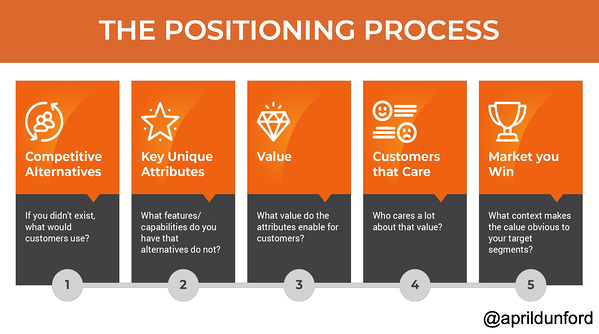
Improving your positioning isn’t as straightforward as writing a great blog post headline. But that doesn’t mean there aren’t concrete steps to work on it.
Let’s look at the process of effective positioning.
1. Go beyond features and benefits by telling a story.
“If Dove, a bar of soap, can find an amazing way to tell a story of real beauty, there is literally not a brand in the world that can’t find their interestingness, their sort of inner meaning, and figure out how to tell their story,” says Linda Boff, CMO of GE.
When you craft a compelling story, you help change the conservation from comparing features and benefits to communicating the end result your product provides.
A good story has a villain and a clear strategy to save the day. John Legere, former CEO of T-Mobile, used the villain narrative successfully to compete with their biggest rival, AT&T.
“As we changed our business and rebuilt our network,” Legere shared with HBR, “we began pointing out the contrast with our rivals—loudly. Every good narrative has a villain, and we picked ours early on: AT&T [. . .] AT&T had exclusive rights to the iPhone when it was launched, and people felt the company had taken advantage of that in pricing and customer service.”
While features and benefits are important, they’re easy to replicate. They often don’t say anything compelling, and, many times, the customer doesn’t actually care about your “groundbreaking” new features.
Joel Klettke, founder of Case Study Buddy, agrees:
One of the most common misconceptions is that your features ARE your positioning. While your features may be a reason to choose you, they do not define your position or brand.
To cite April Dunford, positioning well means understanding your true competitors, what makes you unique from them, and who cares about those advantages a lot. There’s more to it than a feature list.
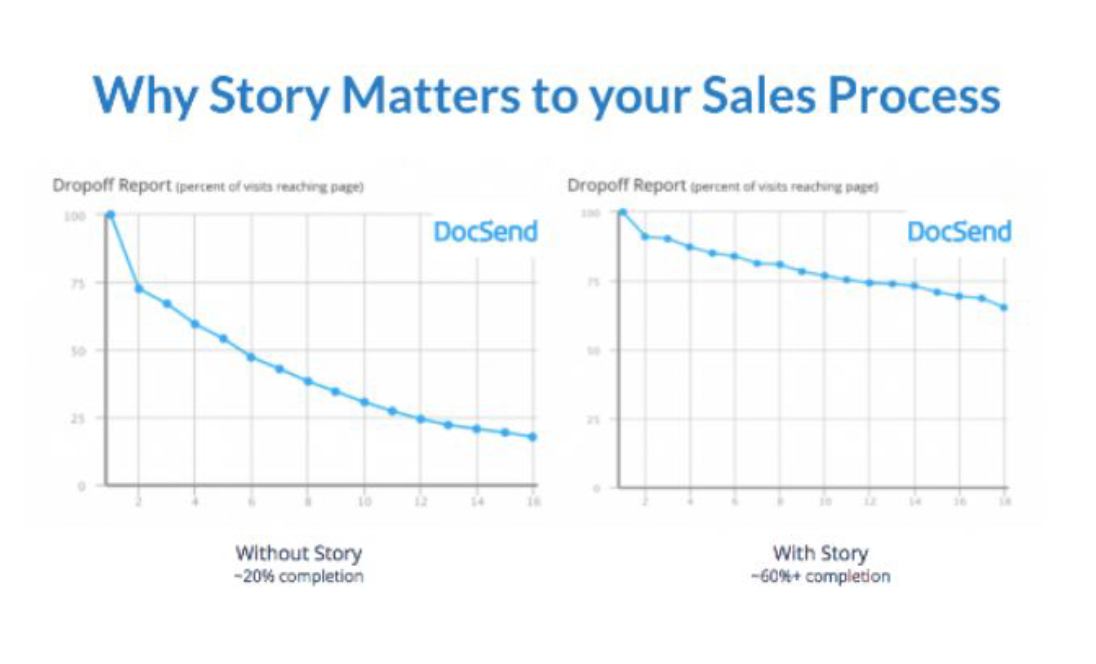
When crafting a story to communicate what your products are about, get specific. Hone in on the exact outcome you want customers to have—and how only you can offer it.
“If you’re telling a story about helping other people,” says Brendan Dell, “everyone can get behind that.” Showing who and how you help, however, doesn’t require droning on about your “greatness.”
Aaron Orendorrf, VP of Marketing at Common Thread Collective, breaks down the value of negative attributes to craft a fuller narrative:
Traditional positioning revolves around positive statements: e.g., what we sell (product or service), who it’s for (audience), how it works (features), and why it matters (benefits). However, as a market gets crowded and commoditized, negative statements become far more valuable.
For example, at Common Thread Collective—because paid media buying has become a race to bottom on agency fees—we lean hard across our messaging into who we aren’t and what we don’t do.
By actively positioning themselves as what they’re not, Common Thread Collective creates separation from competitors—and in prospect minds.
2. Identify and learn from your best customers.
Instead of spending hours in meetings, nose deep in spreadsheets, reach out to your best customers to find out why they chose you. While it may be tempting to survey everyone, your top customers often give you the key data.
Which customers were quick to adopt your products and services? Which consistently refer you business? Customer interviews are a great place to find those answers.
Your top customers can provide insight into how they see your competition, which may be drastically different than how you perceive them internally.
Here are a few questions you can ask:
- Why did you choose us?
- Have you referred others to us? Why?
- What alternatives, if any, did you try before us?
- If you switched from a competitor, why?
- Did any particular marketing campaign nudge you to buy?
- What is your favorite part of our product/service?
Remember, the point of customer interviews isn’t to sell anything but to understand your strengths and weaknesses.
3. Establish a clear value proposition.
What does your product do best? Is it simple and easy to use? Is the support you offer world class? Internally, you may have answers to these questions, but does your branding and messaging communicate that to your target audience?
Evaluate your current value proposition by checking whether it answers the questions below:
- What product or service is your company selling?
- What is the end-benefit of using it?
- Who is your target customer for this product or service?
- What makes your offering unique and different?
You can use the headline/paragraph/bullets/visual formula to structure the answers:
- Headline. What is the end-benefit you’re offering in one short sentence? It can mention the product and/or customer. Make it an attention grabber.
- Sub-headline or a 2–3 sentence paragraph. A specific explanation of what you do/offer, for whom, and why it’s useful.
- 3 bullet points. List the key benefits or features.
- Visual. Images communicate much faster than words. Show the product image, the hero shot, or an image reinforcing your main message.
Talking to your best customers can help clarify where you excel.
Take the online bank Simple, which positions itself as a trailblazer in the new way of banking, a story they tell on their about page:
Way back when, in 2009, after another frustrating banking experience involving hidden fees, unnecessary products, long holds, and complicated conversations, Simple’s future founder Josh Reich emailed his friend (and future co-founder) Shamir Karkal, with some big questions:
Why is banking so complicated?
Can a bank exist to help people, not confuse them?
What if banks didn’t charge so many ridiculous fees?
What if your bank taught you to feel confident with money?The answer to each question was Simple.
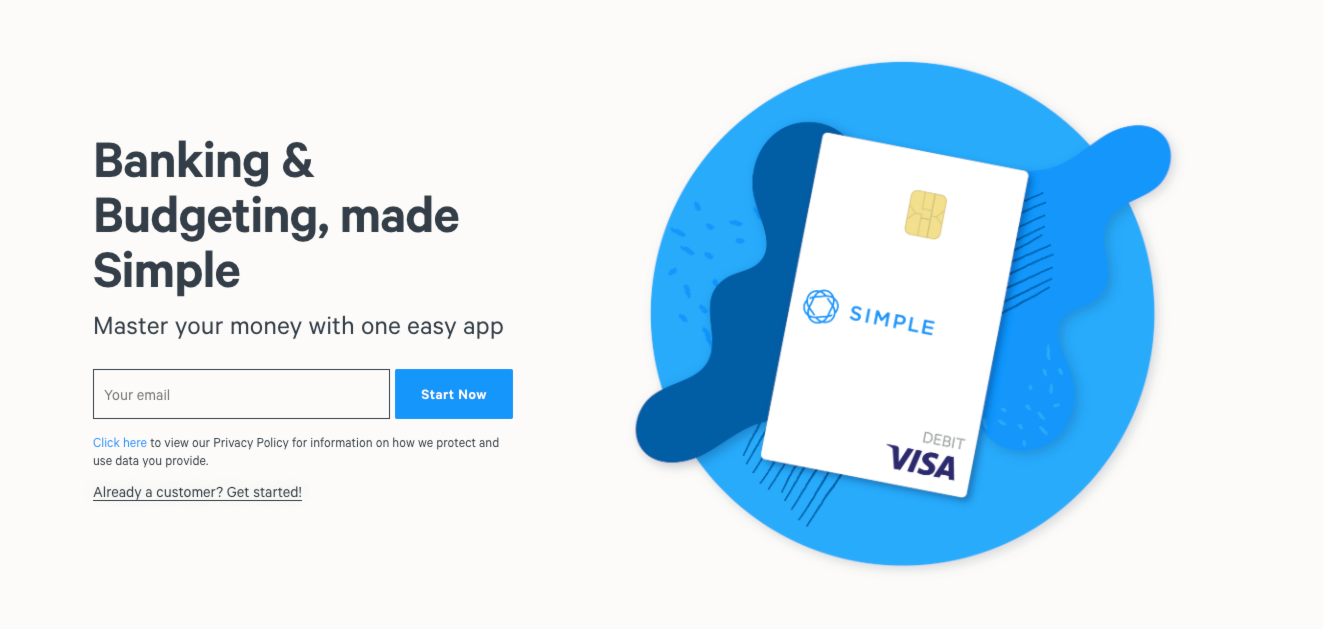 (Image source – simple.com)
(Image source – simple.com)
Simple leveraged the common frustrations of traditional banking and communicated that difference clearly.
Of course, they’re no longer the only ones to focus on simplicity. They can claim that they were one of the first to do so, but that’s still a weakened position compared to where they were a decade ago. For them, it’s time to re-separate from the pack.
4. Communicate a simple promise.
What can you promise customers if they invest in you? How can you communicate that in the simplest terms?
ConvertKit, a popular email service provider, does this extremely well. Their simple promise is “Audience building for creators. Share what you love to connect with your followers and grow your business.”

(Image source – convertkit.com)
With nearly half of the U.S. population under the age of 35 reporting they have at least one “side hustle,” the creator label resonates well.
ConvertKit doesn’t lead with features. They don’t claim that they offer the most advanced email automation or that they’re great for enterprises, too. The promise is simple and tailored to a specific group.
Another great, and perhaps more familiar, example is Geico’s “15 minutes could save you 15% or more on car insurance.” In a single sentence, they set expectations and promise value.
 Catch.co makes it clear who they’re for and what they do.
Catch.co makes it clear who they’re for and what they do.
Vague promises, in contrast, are everywhere. Take Time Warner’s “enjoy better” and “better starts here” messaging. What was better? Pricing? Service? Selection of channels? The campaign was ambiguous and fueled consumer skepticism.
And while Apple and Google can often succeed without perfect positioning for every product, that’s the exception, not the rule. Even Microsoft wasn’t immune to poor product positioning. Remember Zune?
5. Make positioning a team effort
“A positioning process works best when it’s a team effort, ideally from across different functions within the company,” writes Dunford. “Each team, from sales to marketing to customer success, can bring a unique point of view relative to how customers perceive and experience the product.”
Including all teams in the positioning process ensures that everyone is on the same page. It can also help unlock insights that may not always reach across departments.
For example, maybe your customer service team notices that 15% of cancellations result from frustration with a feature that isn’t explained well during the sales process. Or maybe your product team can improve your onboarding, which improves trial activations.
Your positioning affects multiple departments; every leader should have a seat at the table. You’ll need company-wide buy-in to reap the benefits of strong positioning.
6. Change the conversation
It’s tempting to compare yourself to the competition. But the most effective positioning often changes the conversation entirely.
Once again, storytelling can help. Orendorff shares a favorite example:
There is perhaps no one who embodies it better than the single-blade razor company, Supply […] The brand’s flagship SKU sells for ~5x–7x the usual cost of a razor.
That means it has to position itself negatively against competitors as well as positively for consumers. As a result, Supply’s product pages are masterclasses in copywriting, educating, and positioning.
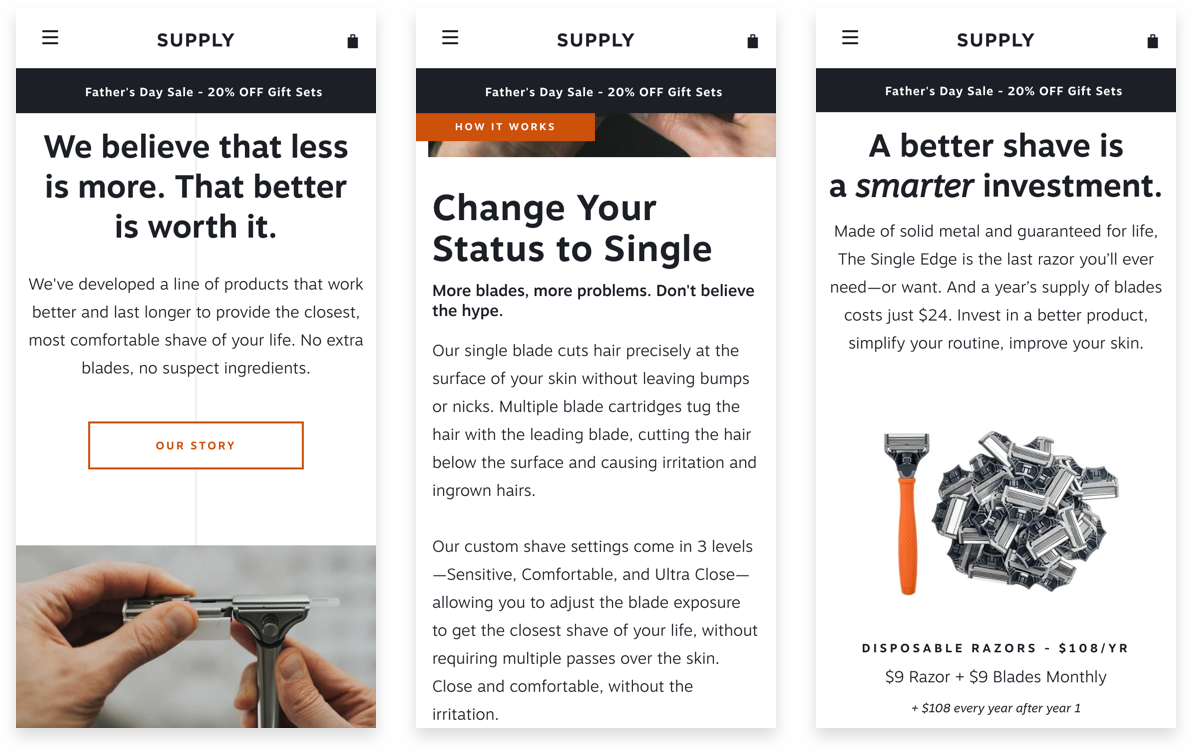 (Image source – supply.co)
(Image source – supply.co)
Strong positioning often makes your customers feel like you’re the way of the future, and that choosing anyone else would be a mistake.
Just don’t expect to arrive at that kind of messaging via a single “Aha!” moment. Trial-and-error and constant adjustments based on customer feedback help develop a unique message over time, which is exactly how Drift did it with “conversational marketing.”
The benefits, Dell notes, are obvious: “It’s easy to dominate your market when you’re the only one in it.” (Just make sure you’re in a market that actually wants to be served.)
Conclusion
Strong positioning starts by rethinking traditional ways and using real-time feedback and engagement from consumers.
Your positioning will never be 100% complete. There’s always more work to be done. But a strong process ensures continual improvement:
- Unlearn the old ways of positioning.
- Determine if your positioning is off.
- Go beyond features by telling a story.
- Learn from your best customers.
- Establish a clear value proposition.
- Make a clear and simple promise.
- Make positioning a team effort.
- Change the conversation.
As Dunford says, “Positioning is a secret superpower that, when harnessed correctly, can change the way the world thinks about a problem, a technology or even an entire market.”
Business & Finance Articles on Business 2 Community
(89)
